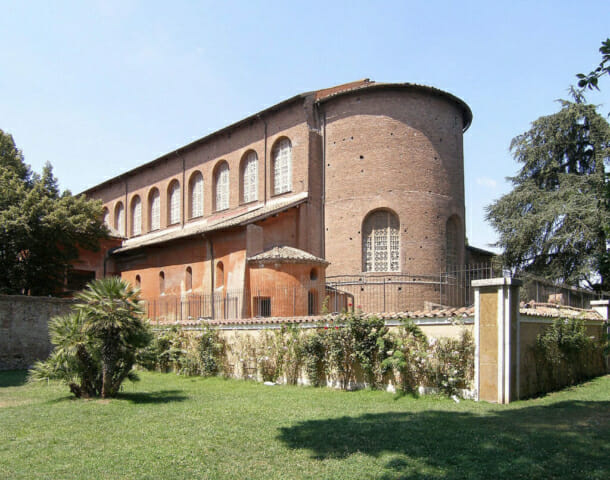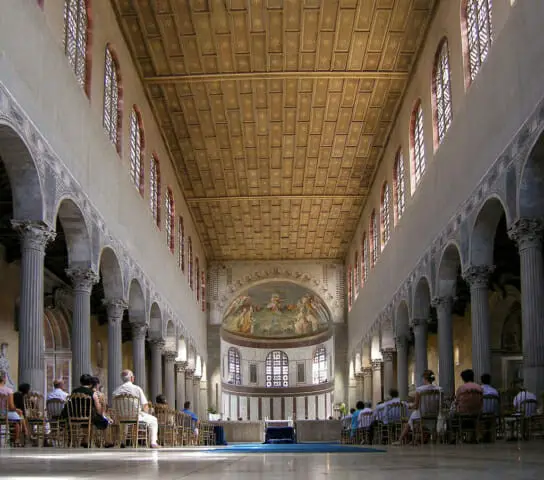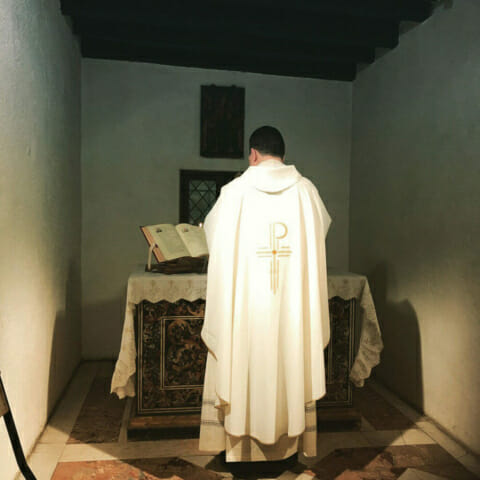About the Basilica of Saint Sabina (Basilica di Santa Sabina all’Aventino):
Located on the Aventine Hill with a splendid view of Rome, this is the oldest Basilica in Rome that has preserved its original plan and simplicity. Unlike many other Basilicas that are decorated somewhat lavishly, Saint Sabina offers a much simpler design. In 1218, Santa Sabina was given to the Dominicans by Pope Honorius III, two years after he approved the foundation of the Order of Preachers. It is the mother church of the Order of Preachers (the Dominicans).
There several unique features to the church: it still has the original doors of the church, which are made of cypress wood and carved with scenes from the Old and New Testaments, including one of the earliest depictions of Christ’s crucifixion.
Another unusual feature is the windows…not made of stained glass as you might expect, but rather made of silenite, which was quite common in early churches.
There is a convent adjacent to the Basilica that has had some very famous residents, including Saint Dominic (founder of the Order of Dominicans), Pope Saint Pius V, Blessed Ceslaus, Saint Hyacinth and St Thomas Aquinas. As you can see by the photo above, the cell of Saint Dominic has been turned in to a small chapel.
Saint Sabina is buried here, as you might expect, but in addition you will find the tombs of Pope Saint Alexander, Saint Eventius and Saint Theodulus.
An interesting artifact kept here is what is called the lapis diaboli, or Devil’s Stone. The tradition tells us that Satan tried to distract Saint Dominic while he was praying in this church. He produced a solid black stone and threw it at the saint. Saint Dominic did not even flinch. Today the stone, with Satan’s claw marks, is in the back of the church.
Ash Wednesday Mass tradition:
During his pontificate, Saint Gregory the Great took refuge here during the plague, and it is believed that is the reason that it became a Lenten practice — a spiritual pilgrimage with Jesus and the saints.
After a prayer in San Anselmo, the procession begins accompanied by the singing of the Litany of Saints, invoking the assistance of all the martyrs and saints for the 40 days of Lent. The procession ends with Mass and distribution of ashes here.




